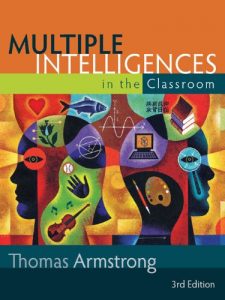“To respect the many differences between people”—this is what Howard Gardner says is the purpose of learning about multiple intelligences (MI) theory, which holds that the human mind is composed of eight intelligences—linguistic, logical-mathematical, spatial, bodily-kinesthetic, musical, interpersonal, intrapersonal, and naturalistic—plus a possible ninth (existential). This updated 3rd edition of Multiple Intelligences in the Classroom, Thomas Armstrong’s bestselling practical guide for educators, includes two new chapters that address the worldwide reach of MI and rebut some common criticisms of the theory.
This new edition includes updated information and resources throughout the text to help educators at all levels apply MI theory to curriculum development, lesson planning, assessment, special education, cognitive skills, educational technology, career development, educational policy, and more. The book includes dozens of practical tips, strategies, and examples from real schools and districts. Armstrong provides tools, resources, and ideas that educators can immediately use to help students of all ages achieve their fullest potential in life.



